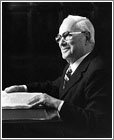Special Collections received funding from the Wellcome Trust's 'Research Resources in Medical History' scheme to catalogue our extensive medical records, which date from the 15th to 20th centuries.
Pre-1860 Collections
Throughout this period Aberdeen was unique in having two universities awarding degrees in medicine: King College, established in 1495 and Marischal College founded in 1593. Both institutions maintained close links with other early European universities, a fact reflected in the volume and geographic span of many of the collections, making them a rich resource for British and European medical history from the medieval through to the modern period.
Highlights include a late 14th-century compendium of medical receipts; the papers of key Aberdeen Enlightenment figure, David Skene (1731-1770), whose voluminous medical case notes provide wonderful detail for medical historians, especially those interested in obstetrics and gynaecology; and the records of other local physicians whose surviving papers illustrate medical practice in the British colonies, aboard East India vessels as well as whaling vessels. European medical history is represented in a rare 10-volume set of manuscript notes of the lectures of Leiden professor, Herman Boerhaave (1668-1738), widely regarded as the first great clinical teacher. But by far the largest collection included in the project is the Gregory Collection, which contains the personal and professional papers of 20 members of this internationally-renowned scientific family, which over the period 1582-1912 produced no fewer than 16 professors within five generations.
The collections are available via the University's Archive Collections catalogue.
Post-1860 Collections
The collections submitted for cataloguing reflect the University's expertise, from the late-nineteenth century, in the allied fields of anatomy, physiology, pharmacology and pathology. They provide researchers with the opportunity to explore the unique contributions made by significant members of this community to their professions; and to trace the developing role of these relatively new disciplines in medical education.
The collections are available via the University's Archive Collections catalogue .
 |
 |
 |
 |
 |
 |
 |
 |
 |
Kosterlitz joined the Department of Physiology as an assistant in 1934. His early work focused on clinical radiology, galactosemia and nutrition, but it was through his later research on the autonomic nervous system and narcotic drugs he achieved worldwide acclaim. His discovery in 1975, of encephalins earned him fellowship of the Royal Society in 1978, and revolutionised research into the effects of addictive drugs on humans. |

